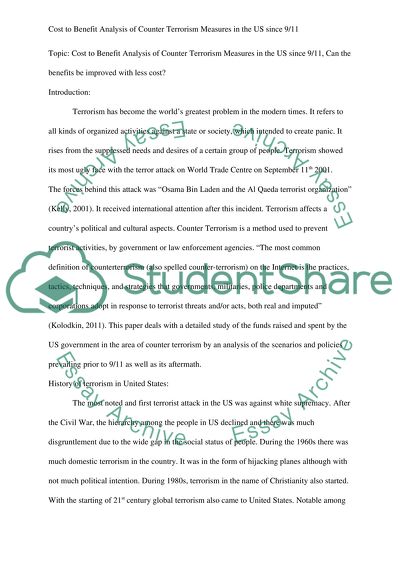Cite this document
(“Cost to Benefit Analysis of Counter Terrorism Measures in the US since Term Paper”, n.d.)
Retrieved from https://studentshare.org/environmental-studies/1413907-cost-to-benefit-analysis-of-counter-terrorism
Retrieved from https://studentshare.org/environmental-studies/1413907-cost-to-benefit-analysis-of-counter-terrorism
(Cost to Benefit Analysis of Counter Terrorism Measures in the US since Term Paper)
https://studentshare.org/environmental-studies/1413907-cost-to-benefit-analysis-of-counter-terrorism.
https://studentshare.org/environmental-studies/1413907-cost-to-benefit-analysis-of-counter-terrorism.
“Cost to Benefit Analysis of Counter Terrorism Measures in the US since Term Paper”, n.d. https://studentshare.org/environmental-studies/1413907-cost-to-benefit-analysis-of-counter-terrorism.


